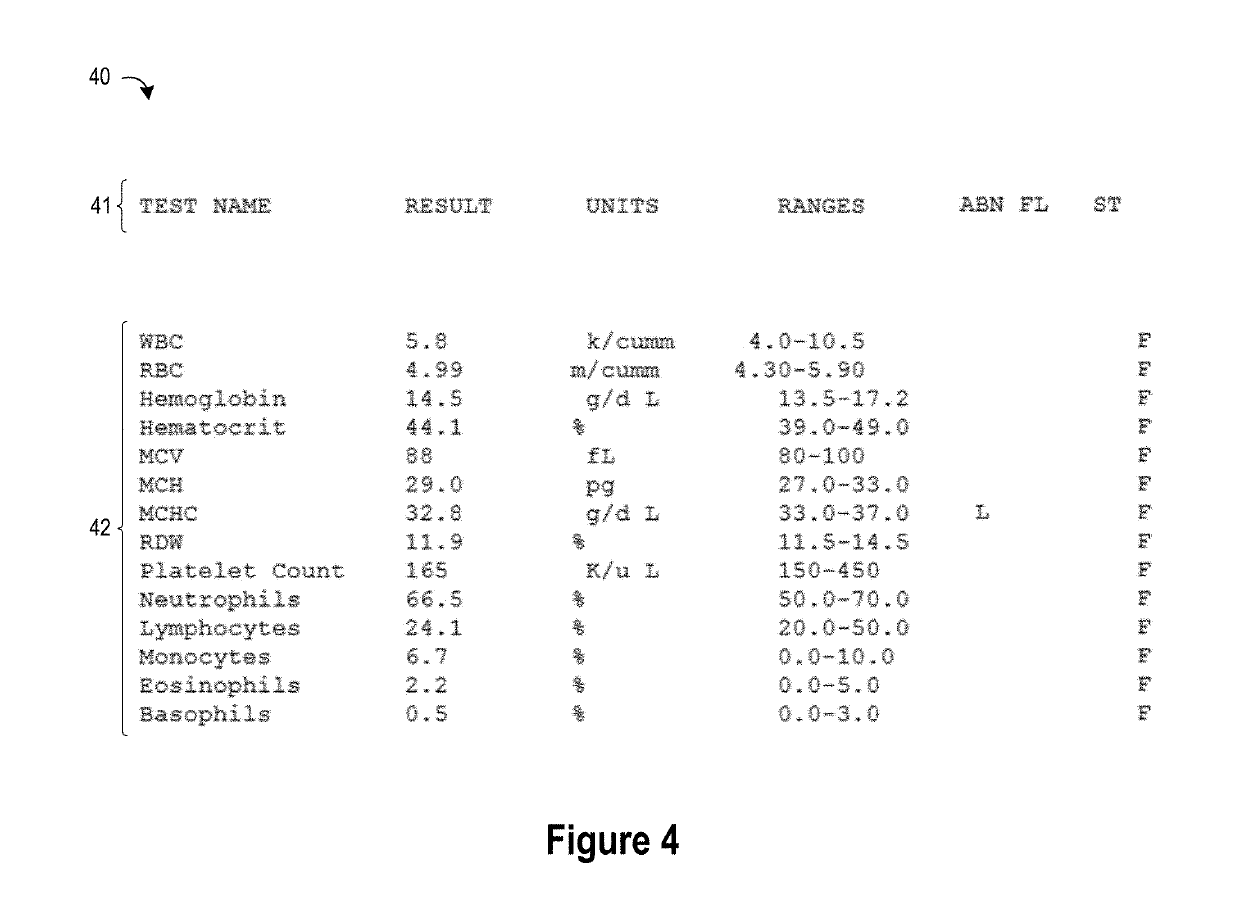Heuristic Domain Targeted Table Detection and Extraction Technique
a targeted table and extraction technology, applied in the field of data extraction from documents, can solve the problems of inability to detect tables in all possible formats, slow solution, inefficient and expensive, etc., and achieve the effect of high-precision targeted table type detection capability
- Summary
- Abstract
- Description
- Claims
- Application Information
AI Technical Summary
Benefits of technology
Problems solved by technology
Method used
Image
Examples
Embodiment Construction
[0014]Embodiments of the present disclosure provide heuristic techniques for detecting and extracting table data from input documents by using semantic analysis to identify table headers and raw text analysis to extract table data. In selected embodiments, the semantic analysis applies semantic groups of table header terms to detect simple tables having any table format. The detection works without any training or table structure knowledge by the detection algorithm. The semantic group detection approach allows the detection of a wide variety of different table headers within the semantic domain where the target tables can use many different words for the actual column header and can detect the table headers even when the column positions are different for the same types of tables. Once table headers are detected, the raw text analysis identifies and classifies data that is part of the table, detects the termination of the table, such as by using a combination of an existing algorit...
PUM
 Login to View More
Login to View More Abstract
Description
Claims
Application Information
 Login to View More
Login to View More - R&D
- Intellectual Property
- Life Sciences
- Materials
- Tech Scout
- Unparalleled Data Quality
- Higher Quality Content
- 60% Fewer Hallucinations
Browse by: Latest US Patents, China's latest patents, Technical Efficacy Thesaurus, Application Domain, Technology Topic, Popular Technical Reports.
© 2025 PatSnap. All rights reserved.Legal|Privacy policy|Modern Slavery Act Transparency Statement|Sitemap|About US| Contact US: help@patsnap.com



